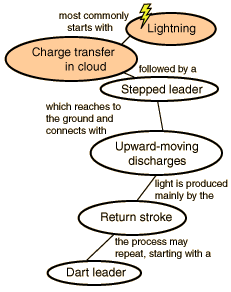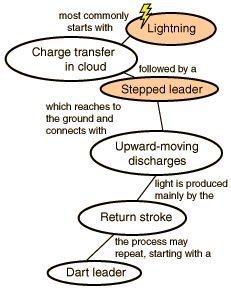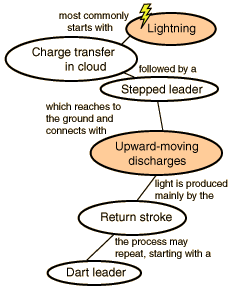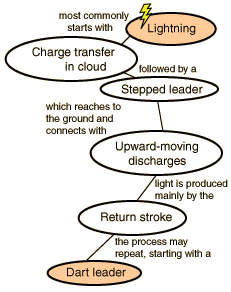Cloud Charge TransferUman "The usual cloud-to- ground discharge probably begins as a local discharge between the small pocket of positive charge at the base of the cloud (the p region) and the primary region of negative charge (the N region) above it. This local discharge frees electrons in the N-region that previously had been attached to water or ice particles. These electrons overrun the p-region, neutralize its small positive charge, and then continue on their trip to the ground. " This description is based upon the tripolar model of charge buildup.  |

|
Lightning concepts
References
Uman
Williams
| HyperPhysics***** Electricity and Magnetism | R Nave |



